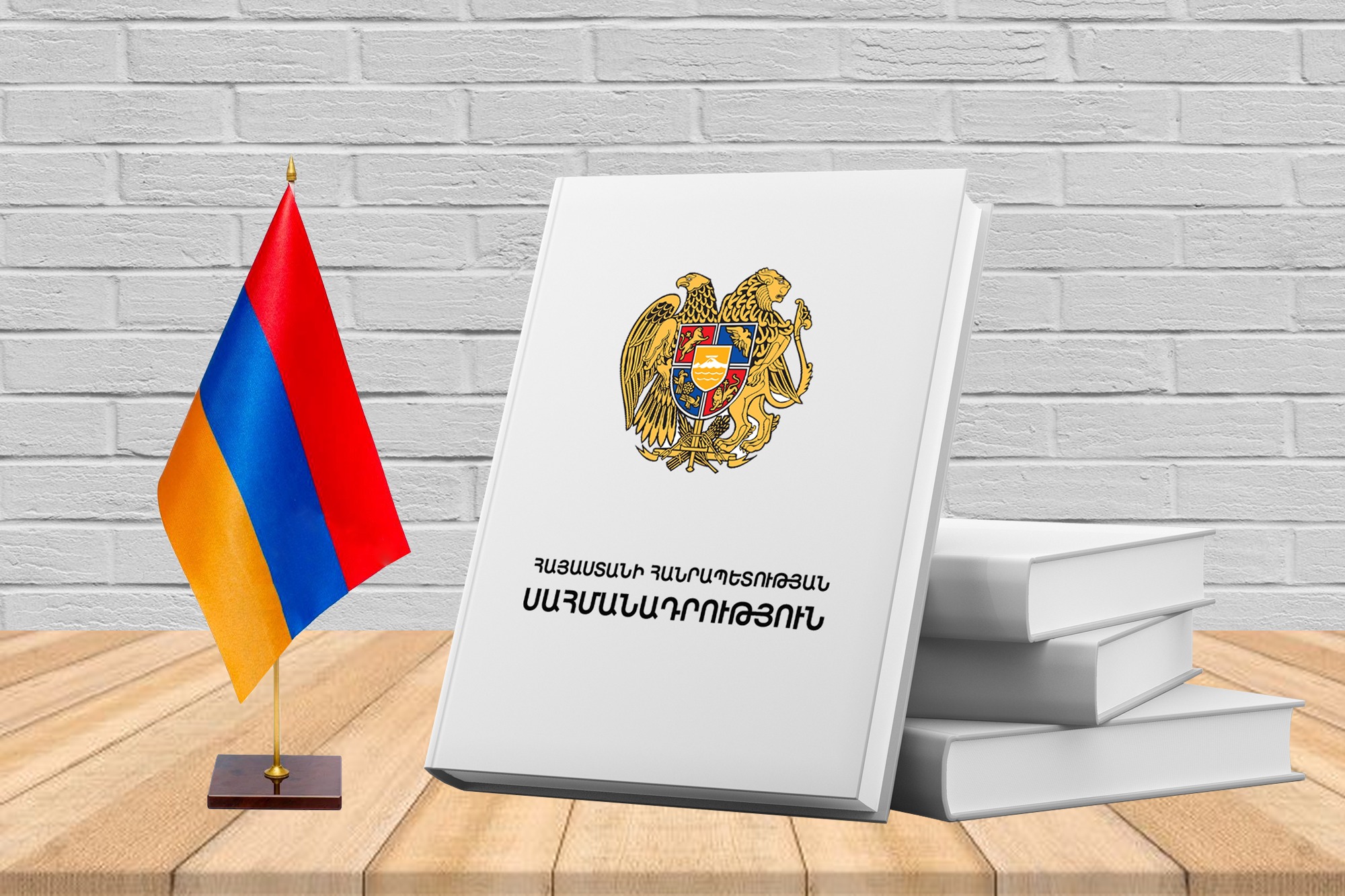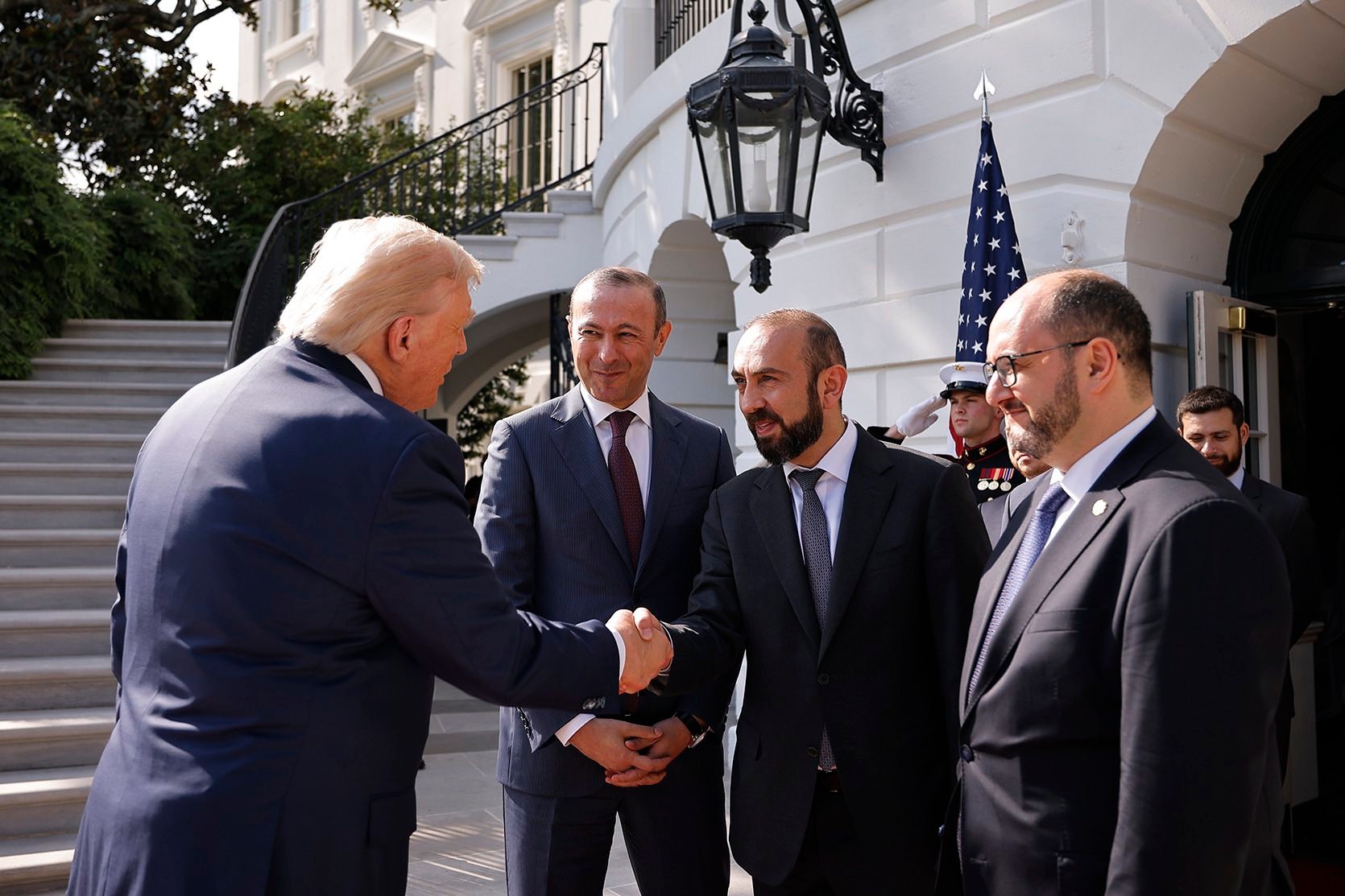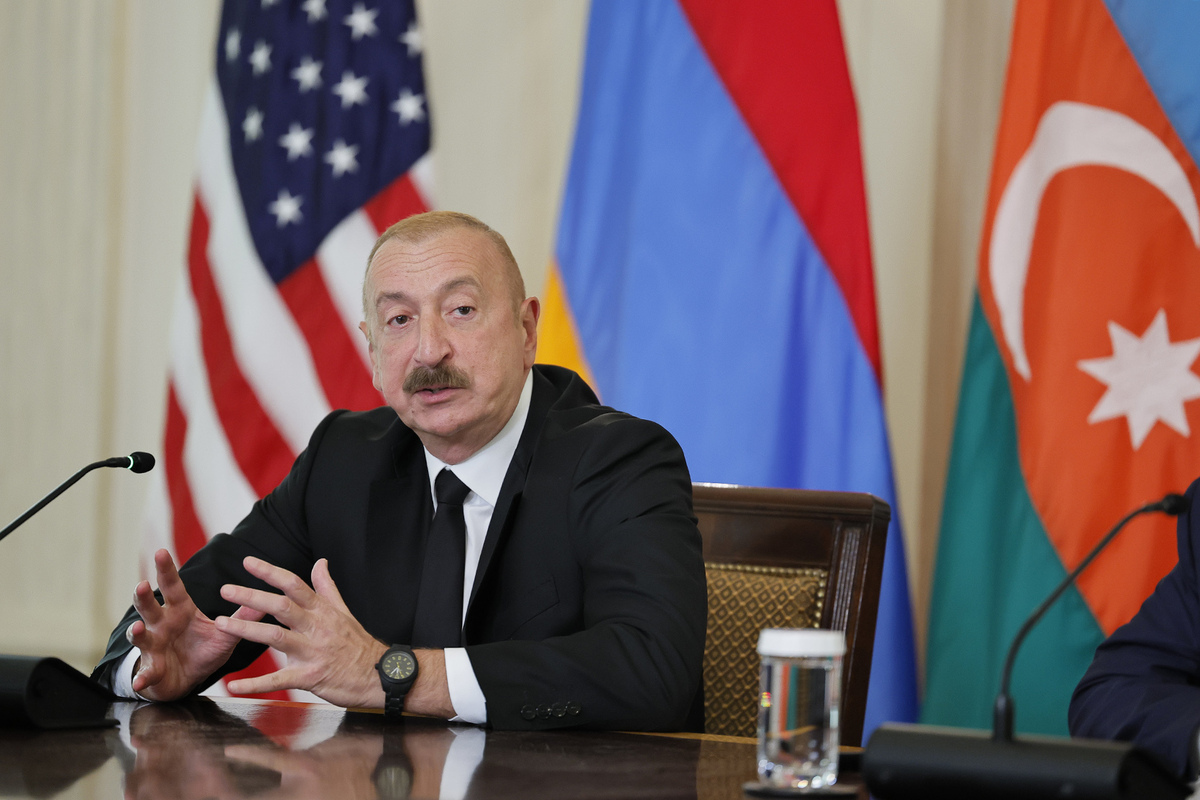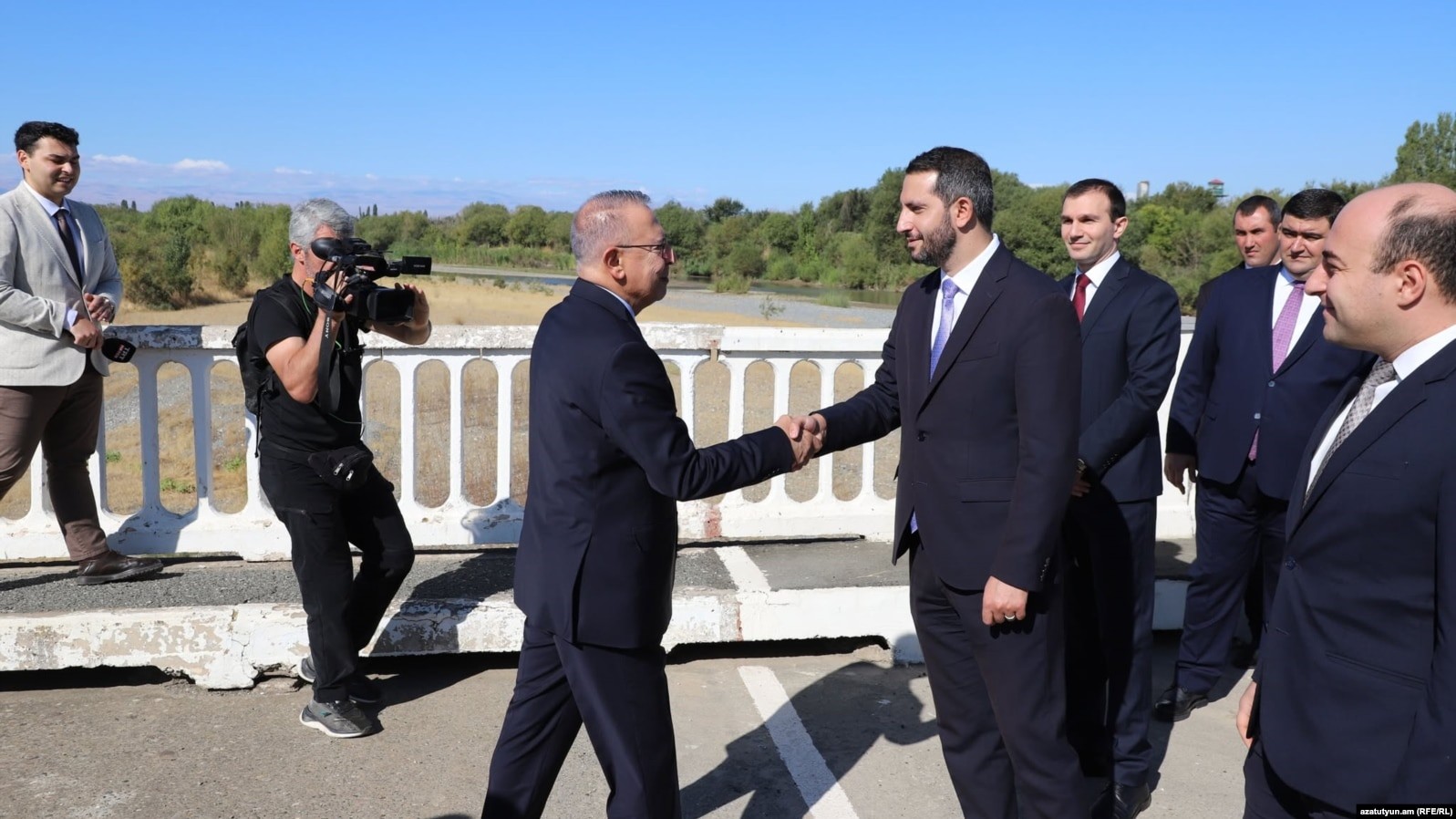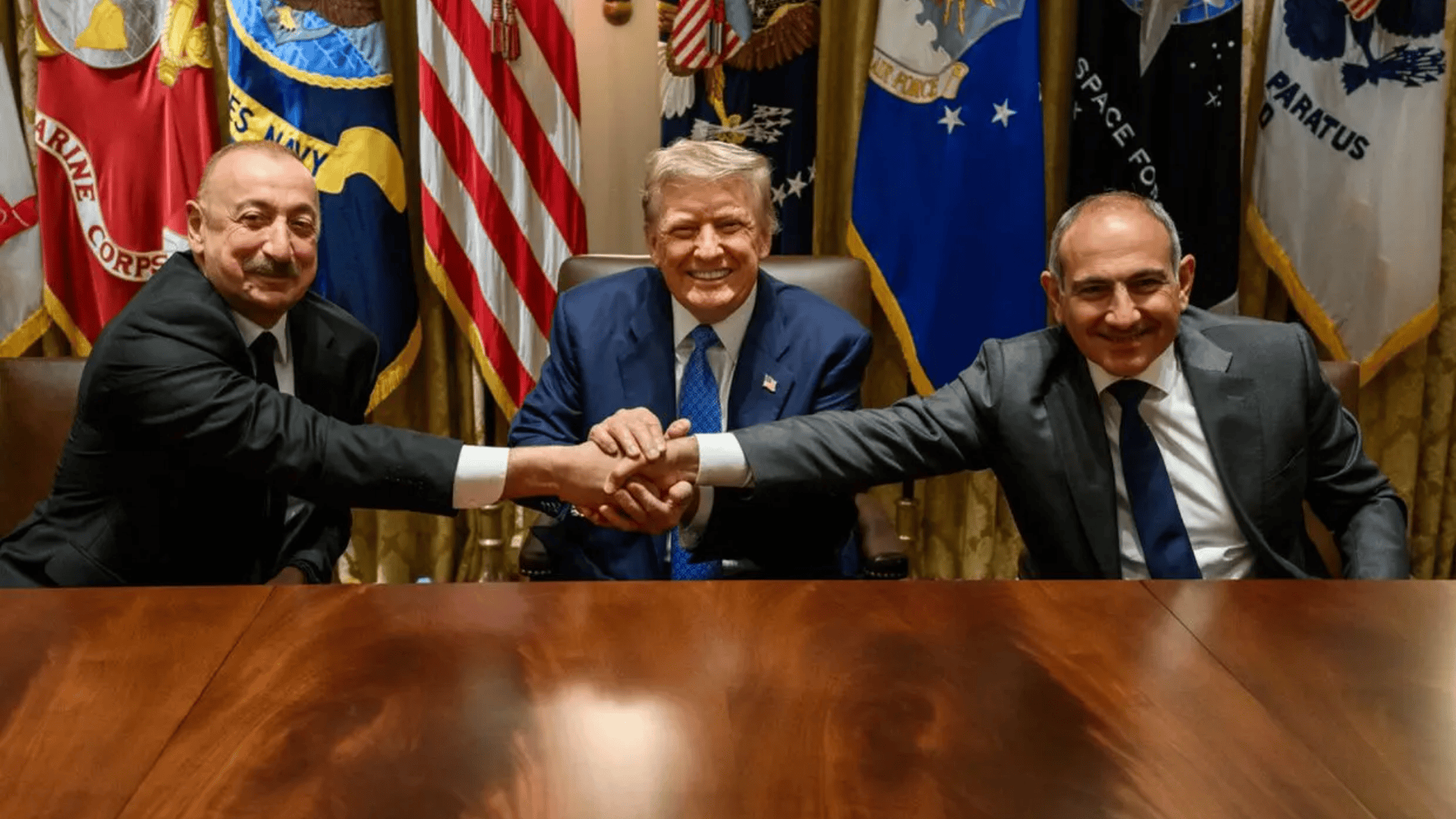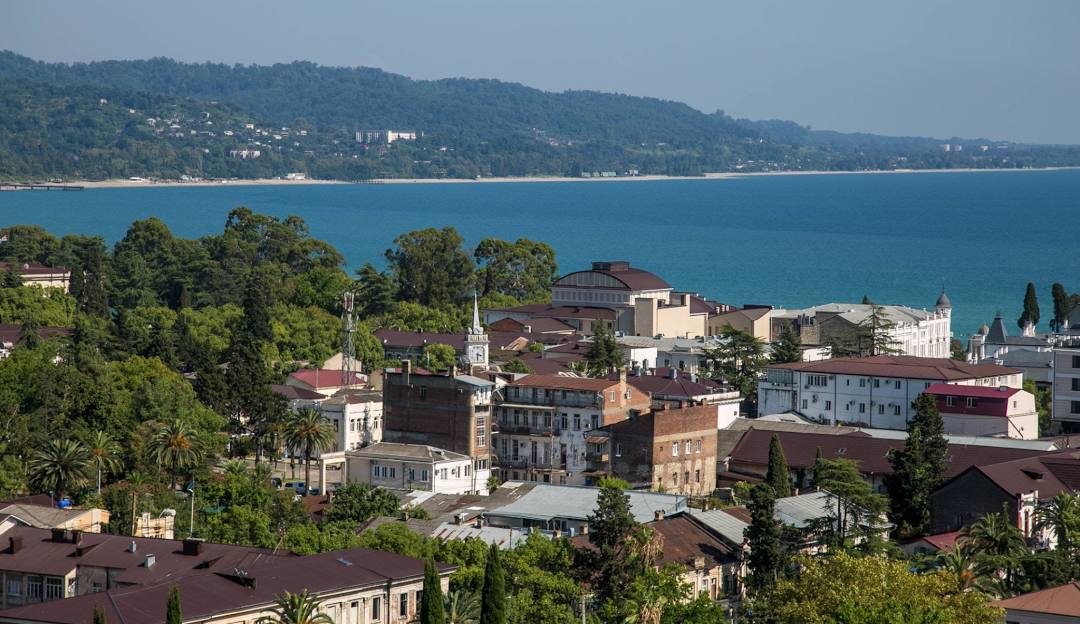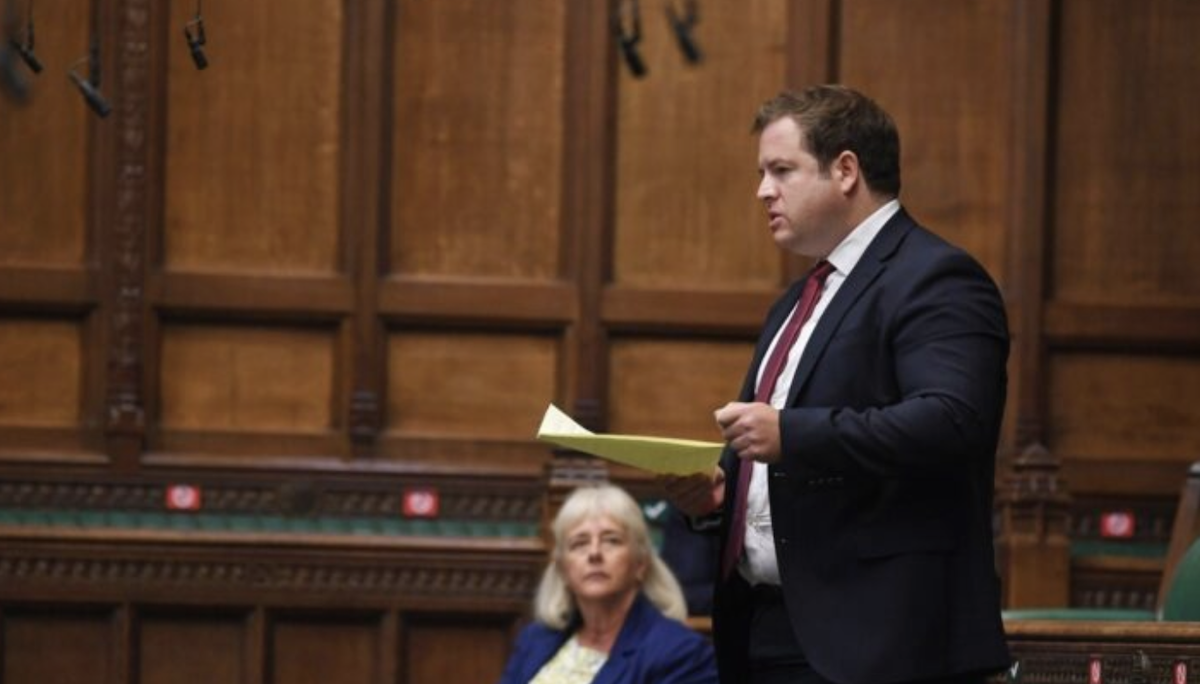Trump Route: Western illusion or turning point in South Caucasus?
Trump road and South Caucasus future
Decades of conflict have shaped the South Caucasus, bringing the region to a critical crossroads. This moment could signal the start of lasting peace, or it could become another point of no return.
In August, with the mediation of US President Donald Trump, the foreign ministers of Armenia and Azerbaijan initialled a peace agreement in Washington. The leaders of the two countries also agreed to open transit routes across the region. This project has been symbolically named the Trump Route for International Peace and Prosperity.
Armenia and Azerbaijan now face a crucial choice: either end a thirty-year conflict and move towards normalisation, or risk derailing the emerging peace plan.
JAMnews takes a closer look at the situation, examining perspectives from both sides. Journalists from Armenia and Azerbaijan have prepared in-depth analyses reflecting official positions, expert views, and the voices of ordinary citizens.
- ‘Historic summit’: Armenia and Azerbaijan sign documents with Trump’s mediation
- Pashinyan believes Trump Route will become new component of Armenia’s security
- ‘Biden’s anti-Azerbaijani narratives debunked‘ — Ilham Aliyev on results of Washington meeting
Context: New phase of old conflict
Armenia and Azerbaijan face a stark choice: to end a 30-year standoff and move towards regional integration — or miss the chance for lasting peace. The 8 August meeting in Washington came as a surprise: for the first time since the end of the Second Karabakh War, talks were held under the personal patronage of the US president.
The initialled peace agreement includes provisions for mutual recognition of borders between the former Soviet republics. It also calls for a renunciation of territorial claims and the use of force. However, the agreement has not yet been formally signed. This limbo leaves the peace fragile and heavily dependent on decisions made in Baku and Yerevan.
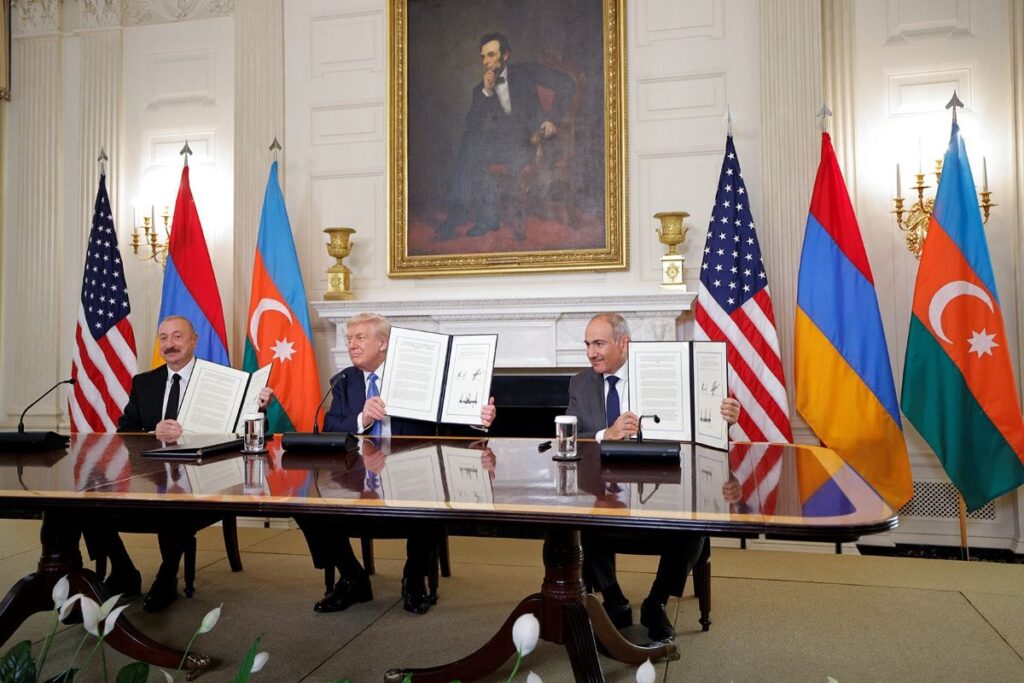
Armenia–Azerbaijan peace talks: the current situation
Negotiations between Armenia and Azerbaijan remain uncertain, prompting mixed assessments. Some analysts see an opportunity for historic reconciliation, while others warn that tensions could flare again.
On one hand, the two countries have never come so close to peace.
On the other hand, even though officials in Washington initialled a peace agreement, the leaders have not signed it. Without a formal signature, neither legal guarantees nor political certainty confirm that the conflict has ended. History shows how quickly situations can change overnight.
In August, Nikol Pashinyan and Ilham Aliyev surprised observers by meeting in Washington. The summit had not been announced in advance, and few expected the US president to attend personally. Yet Donald Trump, eager to secure a Nobel Peace Prize after setbacks in the Russia–Ukraine talks, focused on the Caucasus — a region offering a chance for diplomatic success.
The initialled agreement requires both sides to recognise the borders of the former Soviet republics. The administrative boundaries of the Armenian and Azerbaijani SSRs will become international frontiers. Both countries pledge to respect each other’s sovereignty, territorial integrity, and independence.
Armenian authorities formally recognise Karabakh as part of Azerbaijan, settling the territory’s status.
Pashinyan and Aliyev first set out this position in October 2022 during the Prague meeting. The French president and the president of the European Council mediated the talks.
In Washington, Yerevan and Baku discussed all provisions that interested each side. They recorded these provisions in the document. Both parties confirmed that they would renounce territorial claims against each other and avoid the use of force. They also agreed to refrain from interfering in internal affairs. Finally, they committed to continuing the process of border delimitation and demarcation.
However, there is a catch — initialling does not guarantee implementation.
Initialling the agreement does not guarantee that its provisions will be carried out. Simply put, if either Azerbaijan or Armenia withdraws from the document tomorrow, neither country would face legal consequences.
Azerbaijan has clearly outlined preconditions for signing the final agreement. Its main demand is that Armenia amend its Constitution, which Baku claims still contains territorial claims against Azerbaijan.
Armenia rejects this interpretation, noting that the Constitution contains no language supporting such claims. It only references the Declaration of Independence, which cites the 1989 resolution “On the reunification of the Armenian SSR and Nagorno-Karabakh.”
Armenian authorities insist that constitutional change remains a purely domestic matter. They highlight that two clauses in the peace agreement already address Azerbaijan’s concerns. One clause states that the parties “have no territorial claims against each other and will not raise such claims in the future.” Another specifies that “neither party may invoke provisions of its domestic legislation to justify non-compliance with this agreement.”
Still, some in Armenia quietly acknowledge that Prime Minister Pashinyan might not oppose constitutional reform. However, he lacks sufficient political backing. Any attempt to hold a referendum could fail and jeopardise the entire peace process.
Unblocking regional communications: main point of contention
The signing of a trilateral joint declaration drew far more attention because the US president attended personally. The declaration focuses on reopening regional transport links.
Transport routes have long caused friction between the two sides. The main discussion concerns a corridor through Armenia’s southern province of Syunik. The corridor is intended to connect Azerbaijan with its exclave, Nakhchivan.
Baku insisted on creating an extraterritorial corridor — a road outside Armenian jurisdiction. Yerevan rejected this proposal, agreeing only to reopen transport links under full sovereign control of its territory.
The sharpest disputes focused on the section running through Meghri, which Azerbaijan calls the “Zangezur corridor.” Yerevan opposed granting any “corridor,” seeing it as a loss of control over its land.
The Washington Declaration used wording that satisfied both sides. The document states that transport communications are intended for domestic, bilateral, and international transit “in the interests of promoting peace.” They must operate under respect for sovereignty, territorial integrity, and the jurisdiction of the states. Azerbaijan will gain access to the Nakhchivan Autonomous Republic through Armenian territory on a mutually beneficial basis.
The declaration emphasized the role of the United States. It states:
“Armenia will work with the United States and mutually agreed third parties to develop a framework for the transport communication project ‘Trump Route for International Peace and Prosperity’ (TRIPP) on the territory of the Republic of Armenia. We reaffirm our determination to make good-faith efforts to achieve this goal as soon as possible.”
Thus, the name “Trump Route” first appeared in the context of reopening regional transport links.
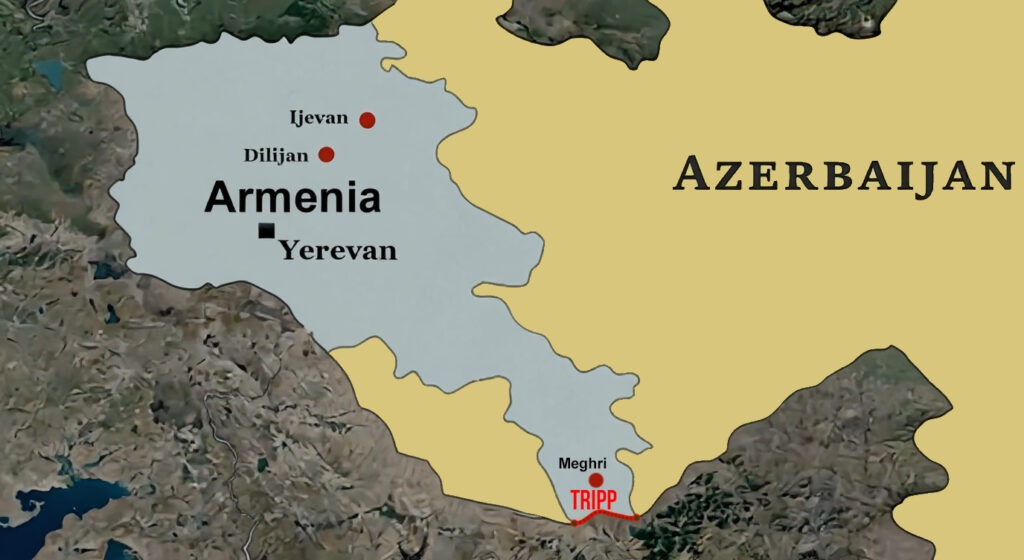
The project will include both road and rail connections.
Armenia’s law enforcement, customs, and border services will operate within its territory. The American side will participate in managing the transport infrastructure.
According to the declaration’s authors, this arrangement aims to ensure transparency and economic efficiency. It also seeks to build mutual trust between the parties during the project’s implementation.
Different interpretations: how Yerevan and Baku understand “Trump Route”
This is where things get interesting.
In international relations, what matters increasingly is not just what is signed, but how each side interprets the agreement. This makes the situation complex. Yerevan and Baku still seem to understand the “Trump Route” differently.
Immediately after signing the Washington Declaration, Armenian society sought clarity on the government’s commitments. The ruling party and its supporters quickly declared that peace had finally come between the two countries and that the threat of the so-called “Zangezur corridor” had been removed.
Prime Minister Nikol Pashinyan said the TRIPP project is a matter of bilateral discussion between Armenia and the United States. He emphasised that while Azerbaijan’s transport links are expected to connect to the route, everything built on Armenian territory will remain under Armenia’s control.
“According to this document, infrastructure under the name TRIPP will exist on Armenian territory. Infrastructure on Armenian soil can only be established by Armenia’s decision. There can be no infrastructure called the ‘Zangezur corridor’ on Armenian land,” he said.
Pashinyan added that talks with the American side on TRIPP’s technical parameters have already begun, though no concrete agreements have been reached yet.
In October, a US delegation on customs and border security visited Armenia to assess the capacity of Armenian border services and identify areas for modernisation.
The Armenian leadership remains confident that the “Trump Route” will be implemented. Yerevan stresses that the future infrastructure will operate strictly within the country’s territorial integrity and sovereignty. All technical decisions must stay within those boundaries.
In short, Armenia’s position is clear: the road should bring mutual benefit, but control over it will rest entirely with the Armenian state.
Video by Artur Khachatryan, Arman Karajyan / JAMnews
Terminology as a battleground: the “Trump Route” or the “Zangezur Corridor”?
The term “Zangezur Corridor” remains a key point of contention between Armenia and Azerbaijan in recent negotiations.
Although the joint declaration does not mention the “Zangezur Corridor,” Azerbaijan continues to insist on using this term for the planned transport link.
Over the past five years, Baku has firmly embedded the phrase in its official vocabulary. It has become a fixture of the country’s political discourse. In Armenia, however, the term provokes irritation and unease.
For Baku, the project is a strategic priority. It symbolizes the restoration of a direct connection between Azerbaijan’s western regions and the Nakhchivan exclave, as well as access to Turkey and Central Asia. The word “corridor” implies that Armenia should have no control over the route — a notion Yerevan strongly rejects.
Armenia views the term as a threat to sovereignty. It suggests an extraterritorial passage where Armenia would not fully exercise its jurisdiction. Yerevan therefore prefers the phrase “unblocking communications” instead of “corridor.”
Long before the Washington meeting, both sides reportedly agreed to drop the contentious clause on reopening transport routes from the draft peace treaty. They wanted to avoid stalling the peace process.
Still, observers in Armenia note that despite the term’s absence from the Washington declaration, Baku continues to use it insistently.
At the UN General Assembly, President Ilham Aliyev once again linked the “Trump Route” and the “Zangezur Corridor.”
He said: “Regional connectivity forms the basis of our vision for lasting peace. One of the key outcomes of the Washington summit is the ‘Trump Route for International Peace and Prosperity’ (TRIPP). It will ensure an unhindered passage through the Zangezur Corridor and strengthen regional ties.”
In practice, Baku uses the term “Zangezur Corridor” as a political marker. It signals continuity in its demands and its vision for the region’s transport future.
All senior Azerbaijani officials continue to repeat this rhetoric, even though official documents only refer to the neutral TRIPP label.
In Yerevan, this terminology appears provocative. Prime Minister Nikol Pashinyan has repeatedly criticized Aliyev and his circle for such statements.
He said: “In the Armenian context, it sounds like a territorial claim and carries a confrontational tone. Such rhetoric does not build trust in peace and contradicts the spirit of the high-level agreements.”
Political Debates in Armenia: Balancing Benefits and Risks
In Armenia, the issue of regional transport links has remained one of the most divisive topics in political debate for several years.
The government insists that reopening routes would unlock unprecedented economic and transit opportunities for the country.
The opposition, however, argues that Prime Minister Nikol Pashinyan’s administration is acting under pressure from Baku and Ankara, exposing Armenia to serious security risks.
Turkey plays a particularly significant role in this process. If the Trump Route project is implemented, Ankara would gain the shortest overland connection to Azerbaijan — and through it, to Central Asia, where its influence has been expanding rapidly.
Opposition MP Tigran Abrahamyan, from the “I Have Honor” bloc, points to Turkey’s double standards:
“Ankara speaks the language of ultimatums and does everything to minimize Armenia’s potential benefits. There were agreements — for instance, to open the border for third-country nationals and holders of diplomatic passports. But those steps were never implemented. Instead, Turkey began building a railway directly to the Nakhchivan Autonomous Republic, making the Gyumri–Kars line economically pointless,” Abrahamyan said.
Armenian officials hope that reopening transport links would give the country direct access to European markets via Turkey and connect its railway network with Iran through Nakhchivan.
Another potential benefit could be restoring railway communication with Russia through mainland Azerbaijan.
Yet, as Abrahamyan notes, these prospects remain uncertain:
“The Washington agreements mention reciprocity, but Baku refuses to apply that principle on its territory. It’s unclear how Armenian cargo will be regulated — Baku insists it will fall entirely under Azerbaijani law. In effect, Armenia would face a separate set of rules on a mere 42-kilometre stretch of land.”
As a result, debate continues within Armenian society: will the Trump Route become a gateway to regional integration — or a trap that limits the country’s sovereignty?
“Trump Route”: Azerbaijan’s view of “Path to Peace and Prosperity” project
Azerbaijan views the “Trump Route” not as a compromise, but as a natural continuation of the commitments set out in previous peace documents — and as a step toward strengthening the region’s transport and economic interconnectivity.
Baku consistently reminds that reopening regional transport links is an obligation Armenia undertook under the trilateral declaration of 10 November 2020, which ended the 44-day war between the two countries with Russia’s mediation.
President Ilham Aliyev has repeatedly stressed that the opening of all transport and communication lines is a key element of the post-conflict period and a guarantee of regional stability. As early as 2022, speaking about the “3+3” regional cooperation platform, Aliyev noted that unblocking communications would remain a central issue in future talks.
Azerbaijani officials argue that Armenia has taken no tangible steps in this direction and express hope that new geopolitical realities will compel Yerevan to act differently.
Foreign Ministry spokesperson Aykhan Hajizadeh stated that “for four years, Armenia has failed to make any meaningful contribution to negotiations on reopening communications, despite its written commitment to connect Azerbaijan’s western regions with Nakhchivan.”
The Azerbaijani parliament and government welcomed the “Trump Route” agreement, highlighting its regional importance.
Parliament Speaker Sahiba Gafarova, speaking at a trilateral meeting of Azerbaijani, Turkish, and Pakistani parliament leaders in October, called the Washington declaration “a historic step.”
She said: “The implementation of the Trump Route for International Peace and Prosperity will turn the Zangezur Corridor into a key Eurasian transport hub that promotes development and cooperation across our region.”
Other government agencies have echoed this position. Officials argue that reopening transport links will spur economic growth across the South Caucasus.
According to the Center for Economic Reforms and Communication Analysis, restoring regional connectivity could significantly boost Azerbaijan’s non-oil exports and GDP.
Lawmakers also emphasized that a peace treaty and the restoration of transport routes will bring long-term stability, attract investment, and create new jobs.
Azerbaijani analysts view the “Trump Route” initiative from multiple perspectives. Many believe that signing a peace deal and reopening regional communications could redraw the geopolitical map of the South Caucasus.
Political analyst Arastun Orujlu says both Russia and the West are seeking to maintain influence in the region, but Baku and Yerevan are now “closer than ever” to reaching mutual understanding without intermediaries.
“If the sides can conclude a peace treaty through direct talks, the role of both Moscow and Western mediators will diminish,” he notes. “That would be the ideal scenario, since Azerbaijan and Armenia now have greater potential for direct agreements than for mediated ones.”
Some experts believe the initiative could weaken Russia’s dominant influence while strengthening that of the United States and the European Union.
Others argue that direct dialogue between Azerbaijan and Armenia, free from external pressure, may offer the most reliable path to ending decades of hostility.
Economists also stress the project’s development potential. Researcher Ulukbek Kamaletdinov notes that “reopening regional transport routes could play a crucial role in accelerating socio-economic growth in the South Caucasus,” cutting transit costs, shortening delivery times, boosting trade, and attracting investment.
From Baku’s perspective, the Trump Route represents an important step toward lasting peace and prosperity.
The government’s position is unified: the peace treaty and restoration of regional connectivity align with Azerbaijan’s strategic interests and contribute to long-term stability.
Officials argue that all parties — Azerbaijan, Armenia, and neighboring states — stand to benefit. For Baku, the project also cements its ambition to become a key regional transport hub.
Analysts say the reopening of communications also carries geopolitical weight. As Russia’s and the West’s roles shift, Azerbaijan seeks to use the moment to advance its independent regional agenda.
Public sentiment in the country reflects cautious optimism. Many hope the new transport corridors will bring lasting peace, greater mobility, and better living conditions.
With practical steps toward implementation expected in the coming months, hopes are growing that the ideas of peace and cooperation will take root as a durable foundation for the region’s future.
What “Trump Route” entails in detail
The “Trump Route” project envisions a transport link running entirely through Armenian territory.
The route is planned to pass through the country’s southernmost region, Syunik — the same area where, during the Soviet era, a railway connected the Armenian and Azerbaijani republics.
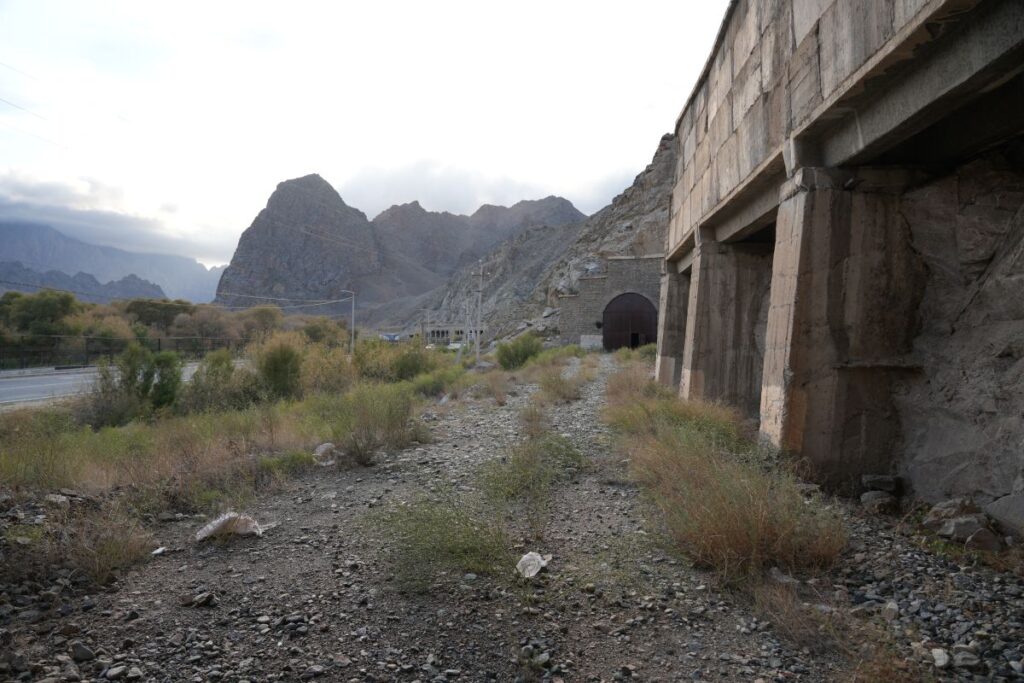
Today, almost nothing remains of that railway. The tracks and sleepers were dismantled back in 1993, during the height of the First Karabakh War. Station buildings have fallen into ruin, with only their shells still standing. In some places, tunnels are blocked with stones and debris. Essentially, all that remains is the terrain suitable for a railway and the necessary track gauge.
According to Foreign Minister Ararat Mirzoyan, constructing a new line could take at least two years. Work has not yet started, but the government remains optimistic.
Political analyst Robert Ghevondyan notes:
“There are talks that Armenia is negotiating with an American company to handle construction. If it is a technically capable company, as expected, then two years is a realistic timeframe.”
The potential new route will run close to the Armenia-Iran border, near the towns of Meghri and Agarak. Local residents are closely watching developments, as all current and future decisions will directly affect their lives.
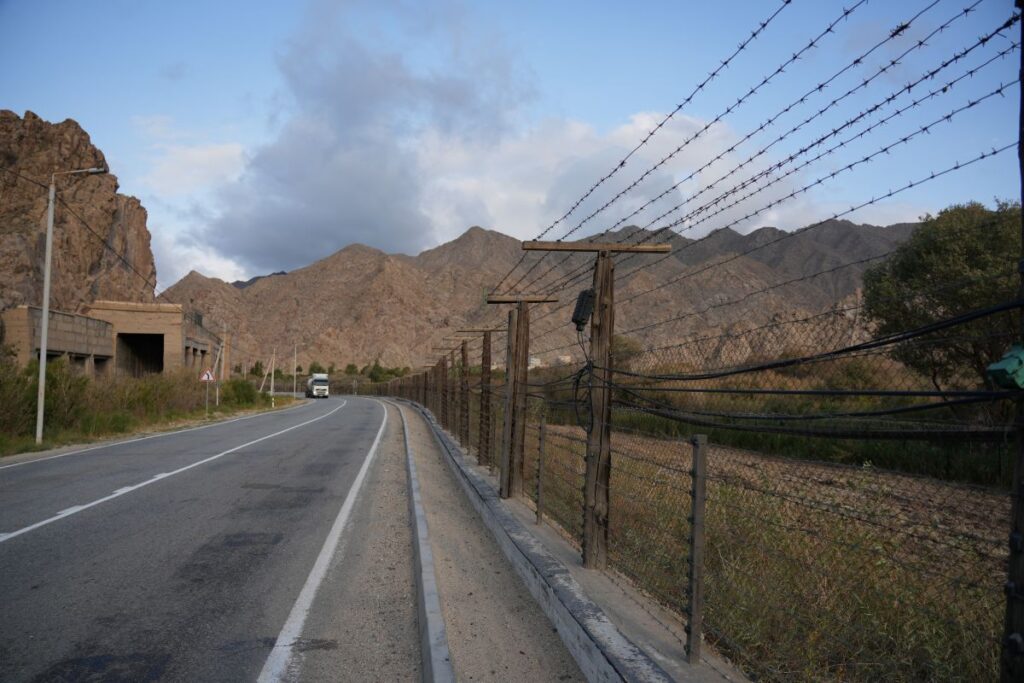
Residents of Syunik are thinking less about personal gain and more about national interests. The region is rich in natural resources and relatively stable economically.
Yet, people are deeply concerned about security.
“One doesn’t really understand what this route will actually be. And as for who will control it, it would be shameful if another state controlled roads within our country. If there’s a customs post operating under Armenian law and people can use it, what’s the problem?” — says one local.
“If the communications work, that would be fine. But they always talk about a ‘corridor.’ I watched Aliyev’s speech, he mentioned the corridor again at the UN. And then we don’t know what to think. Is it a corridor or just a road?” — asks another.
“I’m against it, because you don’t know what will happen after this road opens. Who will this area answer to?” — adds a third.
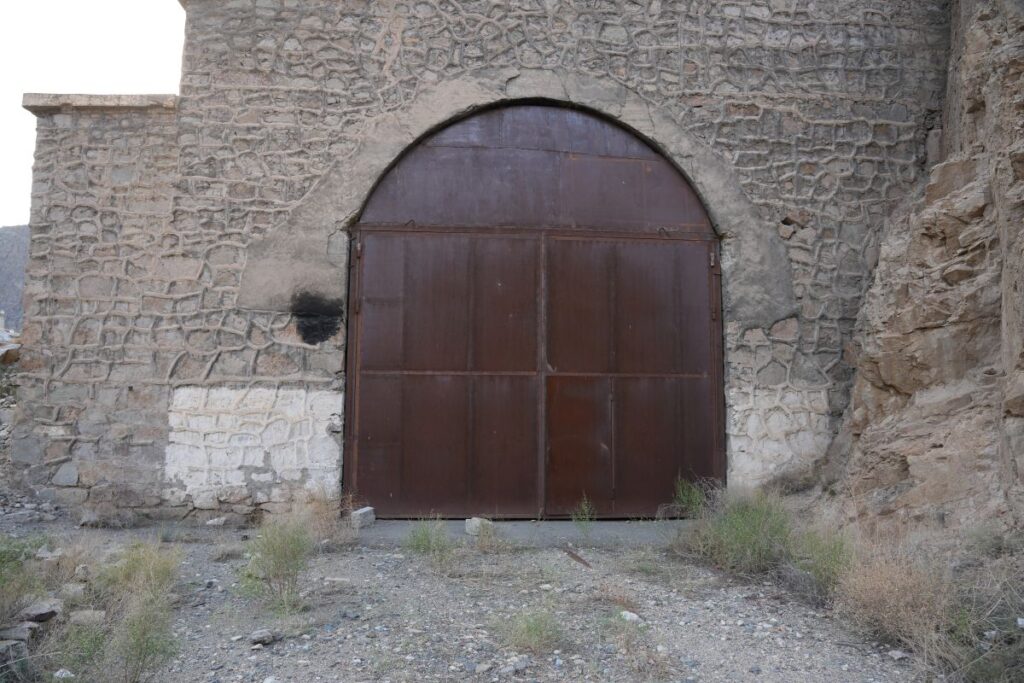
Expert Robert Ghevondyan is confident that if the provisions of the Washington declaration are implemented, the road will remain entirely under Armenian control.
“The document states that if one party seeks any advantage, it must not infringe on the sovereignty of the other country. And the state granting this preference should receive an equivalent benefit.
This means one thing: control over this territory will remain with Armenia, and the appropriate Armenian authorities will operate there,” the political analyst explains.
Regarding the possible involvement of an American company in managing the route, Ghevondyan notes that it does not violate sovereignty.
“There are already examples in Armenia of international management of major structures — for instance, railways are managed by a Russian company, yet the country has not lost control over its territory,” he emphasizes.
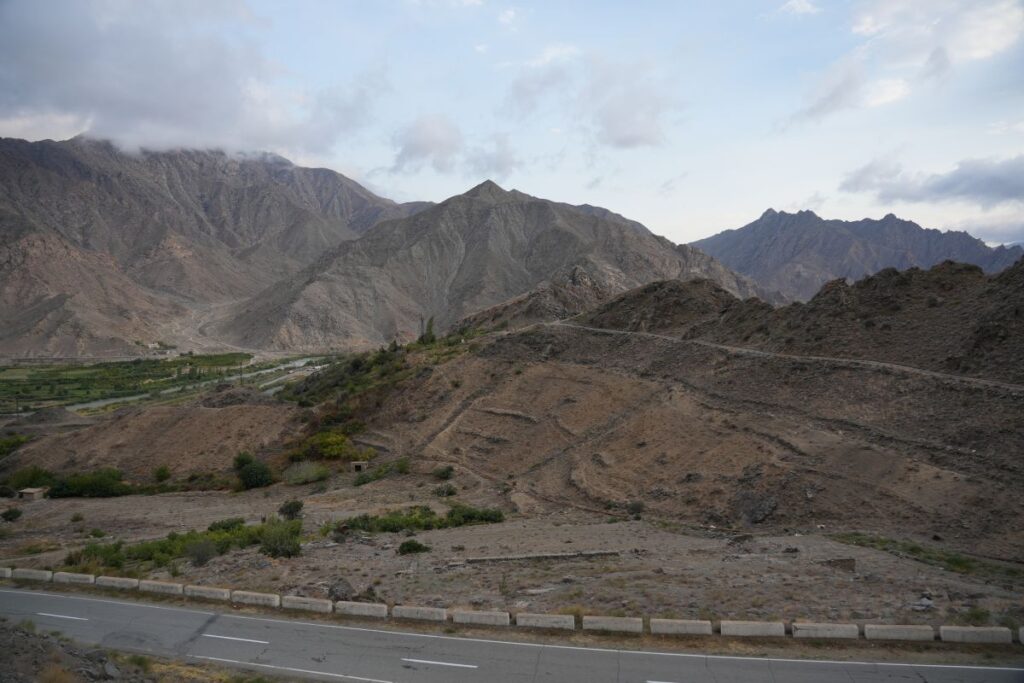
Russia’s Role: From Moderator to Observer
After the signing of the Washington agreements, it became clear that the negotiation process between Armenia and Azerbaijan had decisively shifted to a Western platform, leaving Russia outside the key decisions.
Moscow, which emerged from the 2020 war as the sole and unquestioned mediator of talks, now has limited leverage over the two countries.
In the days following the declaration and the initialing of the peace agreement, the Kremlin maintained conspicuous silence. Only later, at the level of the Foreign Ministry and Foreign Minister Sergey Lavrov, cautious comments appeared, along the lines of “anything that contributes to peace deserves support.”
These statements appeared more an attempt to save face than an expression of active engagement.
Almost all experts agree: Russia is no longer the unchallenged center of power in the South Caucasus.
At the same time, Turkey’s role is growing—not only in its relations with Baku but also regarding Armenia.
Political analyst Robert Ghevondyan notes:
“Russia is not leaving the region. But its gradual decline in influence means its role is now comparable to other regional players. Russia has become one actor among many, not the dominant one.
Previously, Russia was the main power, and processes could not proceed without considering its interests. That logic has changed, and Russia now competes with other countries.”
Armenian experts believe that the future of Russian presence in the South Caucasus largely depends on the outcome of the war in Ukraine.
However, one thing is already clear: the old architecture of influence has been dismantled, and Moscow has lost its monopoly over Caucasus politics.
As they say in Washington, Russia now holds “too few cards” to dictate the rules of the game.
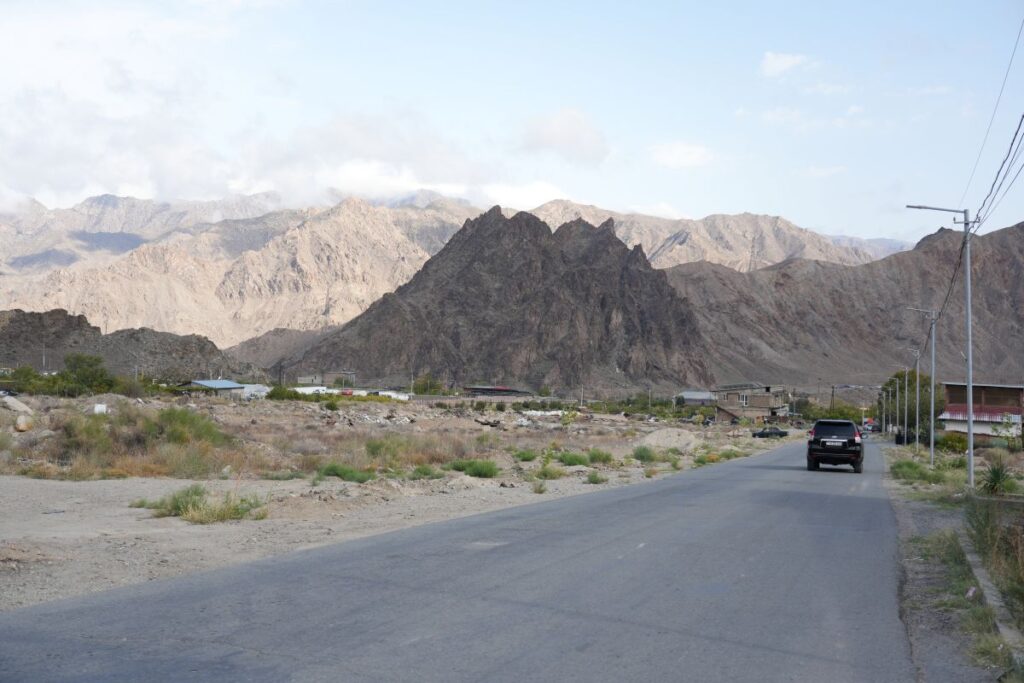
With the support of “MediaSet.”











